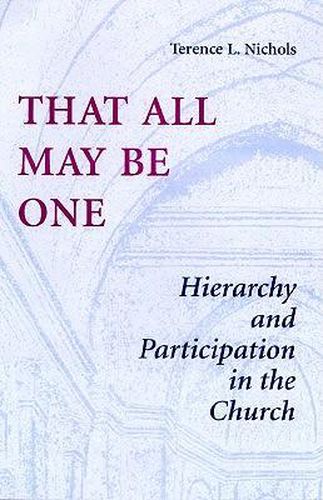Readings Newsletter
Become a Readings Member to make your shopping experience even easier.
Sign in or sign up for free!
You’re not far away from qualifying for FREE standard shipping within Australia
You’ve qualified for FREE standard shipping within Australia
The cart is loading…






This volume maintains that hierarchy in the Church has become almost a pejorative term. Both its attackers and defenders tend to identify it with centralized authoritarian control, which raises a problem for those Churches with a hierarchal episcopate, especially the Roman Catholic Church, which is, according to Vatican II (Lumen Gentium), hierarchal. But to Nichols, this notion of hierarchy as domination is distorted, because hierarchy’s role is to preserve apostolic teaching the unity of the Church and to foster integration. In the book, Nichols maintains that the ecclesial structure of the Church should reflect both the invisible (ontological) aspects and visible (institutional) aspects of hierarchy. Ontologically, Christianity is a hierarchy of participation and integration. The believer’s relation to God, through Christ and the Spirit, is one of participation in and integration into the divine life. Presenting a perspective on hierarchy drawn from Church history, the natural sciences, and contemporary social models, Nichols suggests that this existing model of ecclesial hierarchy does not dominate, but draws people into participation in the life of the Christ and the Spirit, and should be re-examined and recovered.
$9.00 standard shipping within Australia
FREE standard shipping within Australia for orders over $100.00
Express & International shipping calculated at checkout
This volume maintains that hierarchy in the Church has become almost a pejorative term. Both its attackers and defenders tend to identify it with centralized authoritarian control, which raises a problem for those Churches with a hierarchal episcopate, especially the Roman Catholic Church, which is, according to Vatican II (Lumen Gentium), hierarchal. But to Nichols, this notion of hierarchy as domination is distorted, because hierarchy’s role is to preserve apostolic teaching the unity of the Church and to foster integration. In the book, Nichols maintains that the ecclesial structure of the Church should reflect both the invisible (ontological) aspects and visible (institutional) aspects of hierarchy. Ontologically, Christianity is a hierarchy of participation and integration. The believer’s relation to God, through Christ and the Spirit, is one of participation in and integration into the divine life. Presenting a perspective on hierarchy drawn from Church history, the natural sciences, and contemporary social models, Nichols suggests that this existing model of ecclesial hierarchy does not dominate, but draws people into participation in the life of the Christ and the Spirit, and should be re-examined and recovered.